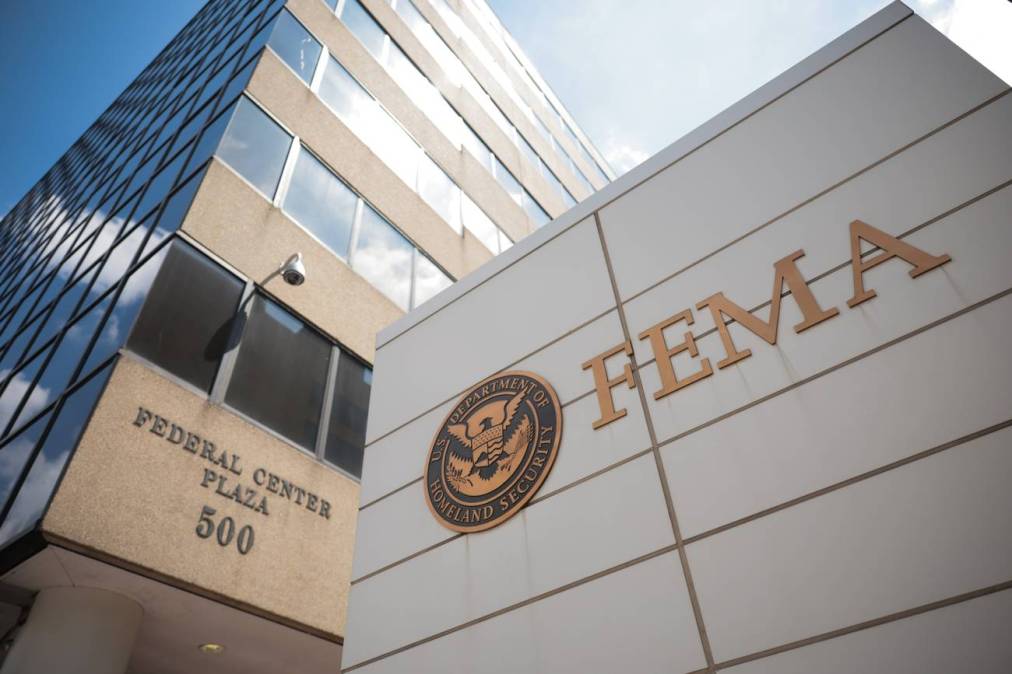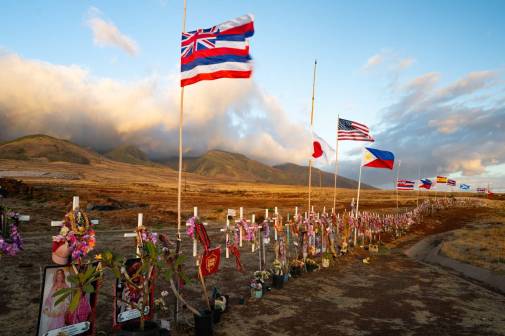The government shutdown didn’t stop disaster relief, but it delays money for states

The U.S. is experiencing several natural disasters, including a powerful coastal storm with major flooding in the Northeast, a major storm with hurricane-force winds in the Bering Sea that has displaced roughly 1,500 Alaskans and devastated the communities of Kipnuk and Kwigillingok, and Tropical Cyclone Priscilla, which brought heavy rainfall to the Southwest.
Those disasters combined with ongoing recovery from previous events, such as the tornadoes in Arkansas, severe flooding in the Texas hill country and the January wildfires in Southern California, make it a less than an ideal time for the federal government to shut down.
Natural disasters don’t stop when the government shuts down, but the money state and local governments apply to receive from the Federal Emergency Management Agency becomes infinitely more complex, said Ratna Dougherty, an assistant professor at the University of South Florida.
“If something is happening that requires dire assistance from the national level, it’s going to happen. I mean, we’re not going to let people just die for no reason,” Dougherty said. “Now the issue with that is, because of a lack of appropriations, as funds are being spent down, there’s no replenishing of those funds if those are necessary.”
During the shutdown, federal agencies, services and employees are divided into two categories: essential and non-essential.
Dougherty said FEMA’s essential services — such as food and water distribution, temporary shelters and housing assistance, and emergency medical and mental health services — continue, but bureaucratic processes like funding and application reviews are delayed.
“The problem is the longer the shutdown continues, the less likelihood of those checks coming in, because there’s just no money left in the budget, specifically for that disaster-recovery portion,” Dougherty explained.
The current shutdown, the second under President Donald Trump, began on Oct. 1, stemming from the stalemate between congressional Democrats and Republicans over health care cuts to the Affordable Care Act. (Trump’s first shutdown, 35 days in December 2018 and January 2019, was the longest in U.S. history.)
In addition to delayed financial assistance, Dougherty said FEMA’s 24,000 employees, 4,000 of which are furloughed, face mental strain and potential burnout. She said state and local governments, already operating on thin margins, are adjusting by cutting services making better use of the resources they do have.
“The boots on the ground is not actually a significant issue,” Dougherty said of the labor force FEMA sends into disaster-affected regions. “To have that assistance from FEMA is absolutely welcome and necessary, but at the end of the day, the most need lays in that bureaucratic structure and back end support.”
Dougherty added that the strain on the agency’s bureaucratic personnel also impacts communication between state and local emergency management officials and their federal counterparts.
“If I’m a manager and I don’t know who my contact is and I have to spend two hours of my day being cycled through multiple people, that’s a problem when I’ve got a community that’s without power, without water and things like that,” she said.
The federal shutdown isn’t isolated just to “boots-on-the-ground” disaster relief. It also affects research and monitoring services, like the National Weather Service, National Oceanic and Atmospheric Administration, National Hurricane Service and other agencies that provide public forecasts, warnings for hazardous weather like tornadoes, hurricanes, flooding and climate data.
Since January, more than 200 employees at FEMA have been cut, and 1,000 employees at NOAA have been laid off as part of the Trump administration’s effort to downsize the federal government. Some reports suggest that more than 2,000 full-time FEMA staff have been terminated or have voluntarily left the agency since the start of Trump’s second term.
In July, during the devastating Texas floods, there were reports that residents did not receive emergency alerts or evacuation orders in time, putting lives at risk, like those at Camp Mystic, an all-girls Christian summer camp along the river that lost 27 of its campers and staff members to the floodwaters, according to the New York Times.
Rick Thoman, an Alaska climate specialist at the University of Alaska Fairbanks, recently wrote that there has been a reduction in weather balloon launches over Alaska since February — another consequence of National Weather Service budget cuts — which might have affected the forecast quality for Typhoon Halong, which struck the western coast of Alaska this week.
Dougherty said it’s fortunate that the federal government deems many of its hazardous-weather-tracking employees as essential workers. However, she noted that their responsibilities may prioritize monitoring rather than public safety communication, like notifications or alerts, which she said risks delaying critical information to areas facing imminent natural disasters.
“A lot of those communication challenges arise because we’re already in a situation where we are right in a scarcity mindset,” she said. “Someone working at NOAA to monitor the weather is not necessarily a public safety person, but they are essential.”






